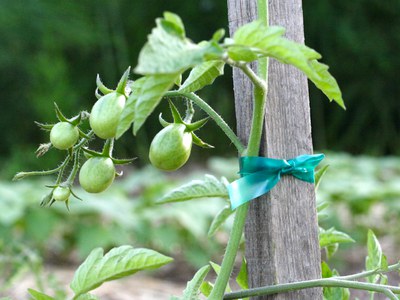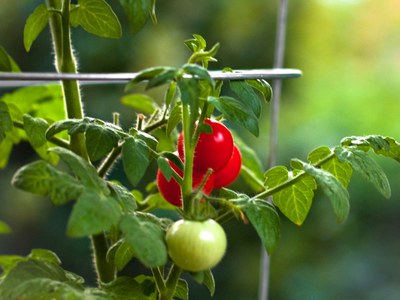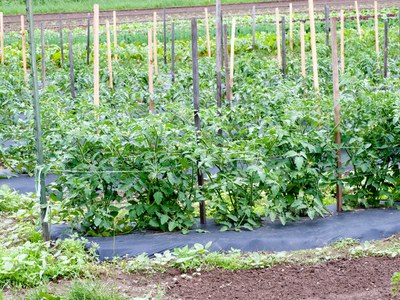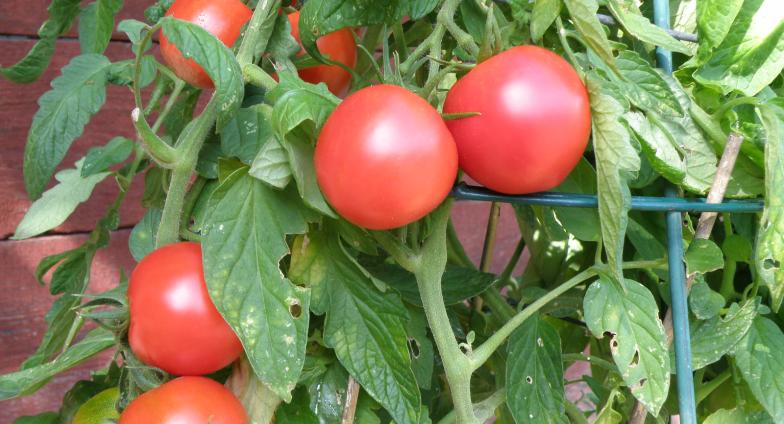3 Options For Supporting Tomato Vines
Supporting tomato vines will lead to healthier plants, higher yields and better quality fruit. Here are popular options for supporting vines, each with its advantages and disadvantages:
Staking

The traditional stake maximizes sunlight to the plant and leads to earlier yields and larger fruits.
Bamboo poles or 1-inch-square (or wider) stakes are used, spacing plants about 24 inches apart. Stakes are placed about 3 inches from the plants. Sisal twine or strips of cloth are used to secure the vines to the stakes.
Staking tomatoes will expose the soil to drying, which may lead to higher incidences of blossom end rot compared to non-staked tomatoes.
Caging

Caging tomatoes will lead to high yields of quality fruits. Get the strongest cages you can find.
Better yet, make your own cages using 6-inch-mesh concrete reinforcing wire. Cut off 6.5 feet and bend it into a circle. This will make a cage 2 feet across and 5 feet high. Remove the bottom horizontal ring and poke the loose wires into the soil. Cages may be cut in half for determinate varieties, which grow shorter.
Tomato vines grown in cages have been reported to produce the highest yields of marketable, crack-free fruits compared to vines grown under other support systems. The fruits are well protected from sunburning.
Caged vines are reported to produce later crops compared to vines grown under other support systems.
Trellising

Many large-scale growers use the string-weave system. Sturdy metal stakes are pounded at the ends of the row. Wooden or metal stakes are placed between every other plant.
Weather-resistant sisal or nylon twine is tied at the end stake. The twine is then strung down to the next stake in the row and looped around the stake, keeping the twine taut.
Stringing continues to the next stake, looped around, and so on to the end of the row. Then it is looped around the end stake and run down the other side of the row. The first twine is placed about 12 inches off the ground and new rows of twine are placed every 8 inches up the stakes as the vines grow.
This system receives very good, but not great ratings for all fruit quality and yield traits.
Written by Tom Kalb, Extension Horticulturist, North Dakota State University. Photos courtesy of gregw, Dov Harrington and Dwight Sipler. Sources of information: Cox, Bonnie. 2019. Training systems and pruning in organic tomato production. Oregon Tilth, Corvallis.
